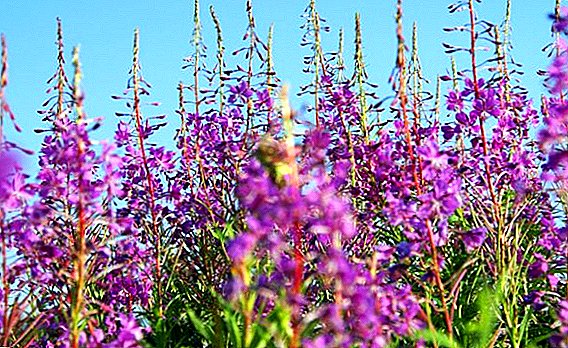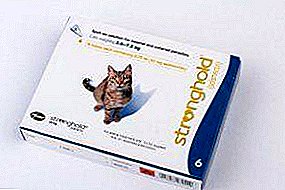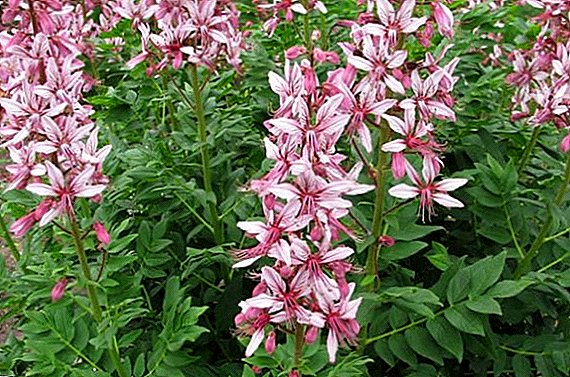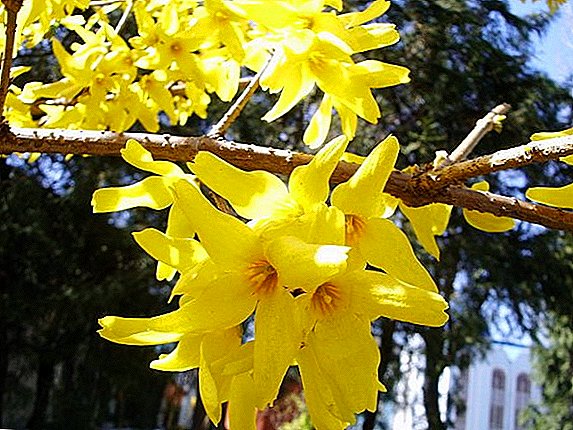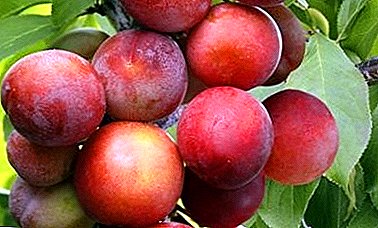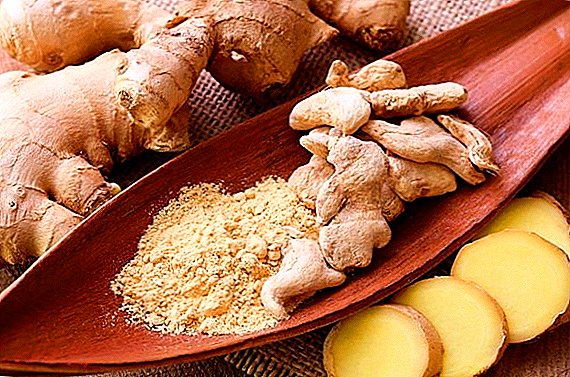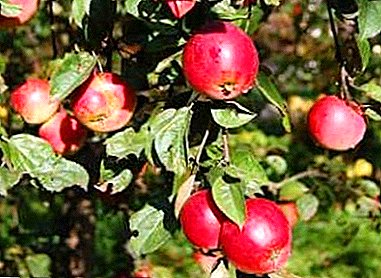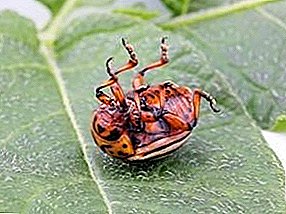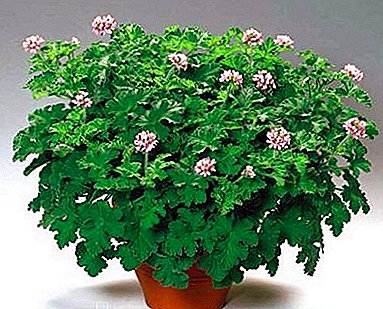
Pelargonium fragrant - quite a famous plant among gardeners. Although it does not differ in bright and beautiful flowering, its ornamental leaves and beautiful fragrance compensate for this shortcoming. The flower is known for its healing properties. It is often used in traditional medicine.
Pelargonium was domesticated because it is decorative, and from it you can get the essential oils contained in the foliage and stem. The article will cover all the features of the flower, the rules of the content and possible problems.
Description, history and cost
As a result of the work carried out by the breeders for growing hybrids, many varieties and varieties were bred, among which Pelargonium Fragrant occupies a significant place. This herbaceous perennial or shrub with a well-developed system of roots.
Stems come in several forms:
- creeping;
- branchy;
- straight lines.
Foliage - palmate lobed, saturated green color. Top covered with small villi. If you touch these villi, then you can feel a light aroma, reminiscent of lemon, pine needles, ginger, peach, mint, nutmeg. There are about 150 flavors of pelargonium.
On a note. Pelargonium fragrant widespread. You can buy at a flower shop at an affordable price. One bush will cost about 250 rubles. The cost is almost always kept at this level.
Appearance and features
The stem has many branches. Its base is woody. In height reaches about 1 meter. The upper leaves are arranged alternately, lower - opposite each other. The color is different - from light green to dark marsh. The red and burgundy blotches dilute the monotony. There is a frill or deep slit along the edges of the foliage. The flowers are small, odorless, are collected in umbellate inflorescences. Hue varied:
- Violet;
- pink;
- white;
- yellow.
It blooms not often.
A photo
Below you can get acquainted with the photo of the plant.





Medicinal properties
The flower has many useful qualities. The leaves of fragrant pelargonium contain:
- Essential oils.
- Organic acids.
- Starch.
- Copper.
- Tannins.
- Calcium.
- Pectins.
- Glycosides.
Leaves have the following properties:
- Bactericidal.
- Painkillers.
- Absorbable.
- Emollient.
They are also able to help with swelling, headache, runny nose, restore blood, accelerate the healing of wounds. Juice collected from foliage is used in the treatment of otitis. <
Pelargonium oil can be used to treat hypertension, diabetes, infertility, painful periods. You just need to add a couple of drops in the bowl of an aromatic llama and light a candle. Another option is to mix 7-8 grams of plant oil and 30 grams of base, and massage is done.
Insects do not like the scents of pelargonium and are afraid to fly into the room where it is located.. This effect is achieved by the insecticidal properties. There are cases when a decoction of foliage treated pediculosis. If you put the branches in the closet with clothes, you can forget about the appearance of the moth.
Despite the many medicinal properties, there are a number of contraindications for the use of drugs made on the basis of this plant:
- Low pressure.
- A stomach ulcer.
- Pregnancy.
- Gastritis.
Where and how to plant?
 Fragrant Pelargonium is completely unpretentious. She patiently refers to unfavorable conditions of detention, but do not abuse this, because she also has preferences. Grown from cuttings or seeds.
Fragrant Pelargonium is completely unpretentious. She patiently refers to unfavorable conditions of detention, but do not abuse this, because she also has preferences. Grown from cuttings or seeds.
- Lighting and location. It is recommended to place a pet on the windowsill, whose windows face the east or west side. There growth will be much faster, and flowering is lush. Located on the south side, it is necessary to take into account that constant direct sunlight is not desirable, so you have to shade.
- Requirements for the soil. To prevent rotting of the roots, a drainage layer is put on the bottom of the pot. In the role of drainage fit expanded clay, broken brick. Above it is allowed to place a flower with a lump of earth. The last layer is a soil mixture for indoor flowers. To prepare the substrate you need to take 1 part of peat, humus, turf and sand.
Important! This mixture is roasted in the oven.
Home care
- Temperature mode. Fragrant pelargonium does not like excessive heat. The optimum air temperature is +20 degrees. Be sure to ventilate the room, as it favorably affects the flower. In summer, the plant is often carried out on an open balcony.
- Watering produced after the top layer of the earth dries out. Does not need spraying. Watering should be moderate. Does not tolerate stagnant water. The main feature of pelargonium - the ability to accumulate moisture in the leaves and stems.
- Pot. If the capacity is large, then all the power goes to the development of the roots, the flower grows slowly, there is a small number of shoots, and virtually no flowering. Based on this, we can conclude that the container is chosen only a couple of centimeters wider than the root ball.
- Fertilizers. The use of fresh organic matter is prohibited. Ideal complex supplements, which contain nitrogen, potassium, phosphorus. Fertilizers are applied every 14 days from the beginning of March to October. In winter, there is no need to fertilize. It is necessary to refrain from dressing in the event that the pet has recently been transplanted.
- Pinching and trimming. To prevent pulling, give a neat shape to the bush, increase the number of shoots, pinch the old stems. Formation must begin with the first days of cultivation. The main goal is to achieve branching.
Diseases and pests
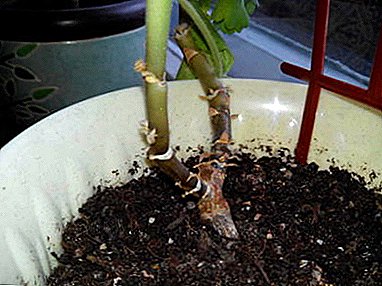 Blackleg. The stem turns black near the base, then the disease spreads over all areas of the plant. The disease is not curable. To avoid disease, you can only comply with security measures at the time of purchase, and the process of planting and transplanting.
Blackleg. The stem turns black near the base, then the disease spreads over all areas of the plant. The disease is not curable. To avoid disease, you can only comply with security measures at the time of purchase, and the process of planting and transplanting.- Gray rot. Appeared gray plaque on the sheet plate, a clear sign of rot. For the rescue will need to completely stop watering, remove the affected areas, process the fungicidal solution.
- Whitefly and aphid. Pests lurk on the inner side of the leaf, and feed on the juice of pelargonium. A sign of their defeat is yellowing and falling foliage. To get rid of insects, it is necessary to wash with soapy water and a couple of times to treat with insecticides.
Breeding features
There are 2 types of reproduction - with the help of seeds and cuttings. The first method is considered more complex, but its main advantages: compactness of the bush, abundant flowering.
Seeds
- First, the grains are cleaned from the outer shell.
- Then they are treated with epin and soaked in water for 3-4 hours.
- Seeds are sown at a distance of 5 centimeters from each other.
- After they were placed in the ground, sprinkled on top of a layer of earth in the 5-6 millimeters, watered and covered with glass.
- The first shoots will appear after 2 weeks.
- In the end, there is a picking and seating on separate containers.
Cuttings
- From the top of the pelargonium cut off the escape with a few sheets.
- Then put the cutting in the water.
- The roots are formed in a couple of days and the flower is ready for planting.
- It is necessary to maintain optimal moisture and prevent direct sunlight from penetrating.
Fragrant pelargonium is a wonderful decoration for your home. It creates a certain comfortable atmosphere, which disposes a person to rest. In the care is very simple. Even a novice florist can handle it.


 Blackleg. The stem turns black near the base, then the disease spreads over all areas of the plant. The disease is not curable. To avoid disease, you can only comply with security measures at the time of purchase, and the process of planting and transplanting.
Blackleg. The stem turns black near the base, then the disease spreads over all areas of the plant. The disease is not curable. To avoid disease, you can only comply with security measures at the time of purchase, and the process of planting and transplanting.